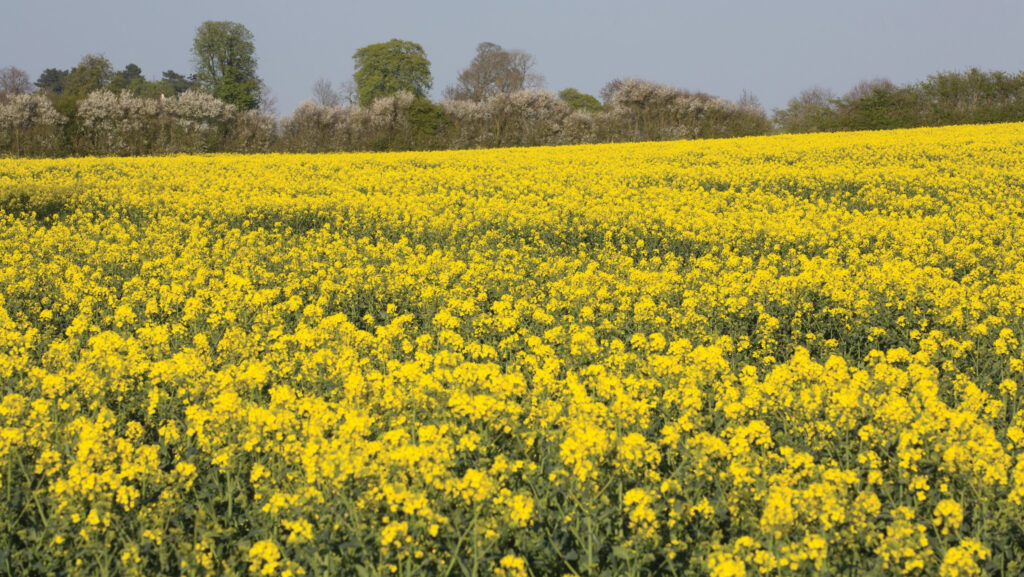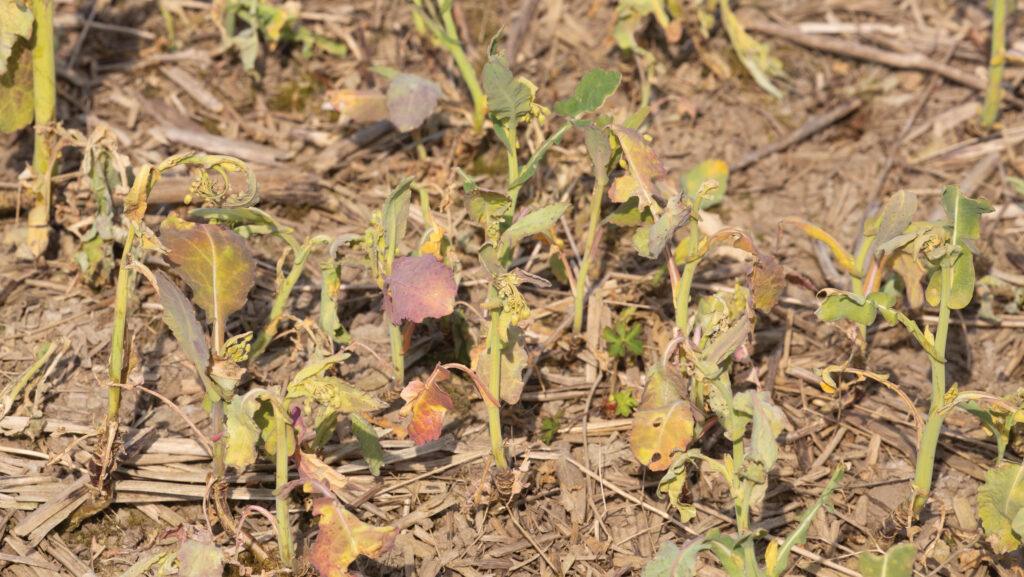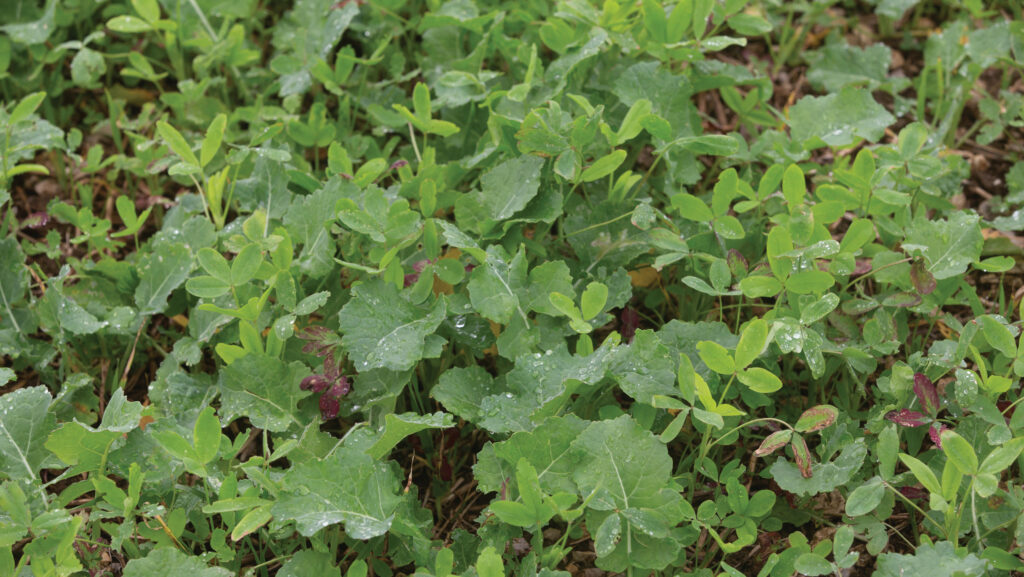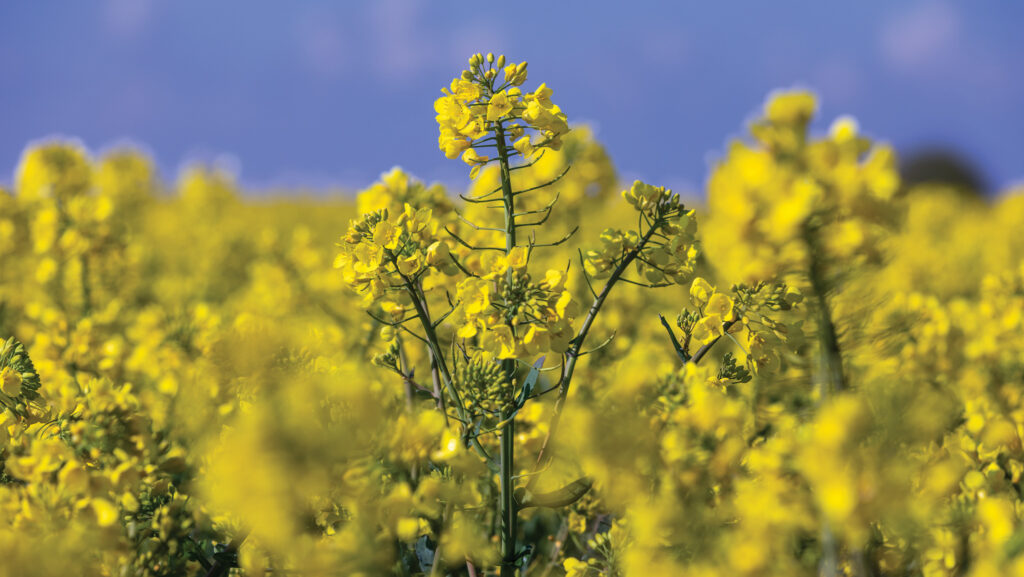Should growers persevere with oilseed rape despite challenges?
 © Tim Scrivener
© Tim Scrivener The AHDB has estimated a near 30% drop in the UK oilseed rape area compared to 2023, making it the UK’s smallest crop for 40 years – at 280,000ha.
With the total crop area falling year-on-year, largely due to cabbage stem flea beetle damage (CSFB), and weather-related struggles when establishing crops, the rollout of the Sustainable Farming Incentive (SFI) is now exacerbating area decline.
However, all is not lost when it comes to oilseed rape, explains Charlotte Cook, independent agronomist at Indigro.
See also: Why a Scottish estate harvests crops every month of the year
“There are pros and cons of oilseed rape. Logistically, it’s a good crop to have in the rotation because it can be harvested early, and leaves the ground clear for the next crop,” says Charlotte.
However, she highlights the challenges associated with CSFB, along with increased slug pressure, which can impact the following crop.
“Oilseed rape can also harm the mycorrhiza in the soil, and reduce soil biodiversity,” she says.
When it comes to price, fluctuations are common. “The margin from growing oilseed rape changes dramatically because of the oil price, and it is a high-risk crop in terms of establishment, due to CSFB.”
There is also the consideration of hybrid versus conventional seed varieties.
“A hybrid variety has more vigour, lower seed rates and costs potentially £90/ha for the seed.
“Conventional seed is cheaper, and can be home-saved. It’s a lower investment from the get-go,” she explains.
“I always recommend growers don’t cut corners, as it risks a shift in focus from achieving the ultimate potential of the crop. People that spend £90/ha on hybrid seed tend to nurture the crop and look after it.”

OSR has yet again been decimated by cabbage stem flea beetle ©Tim Scrivener
Cultural controls
Companion cropping can have benefits. “Buckwheat helps to provide phosphate and berseem clover fixes nitrogen – both of which die within the crop, so don’t compete,” Charlotte says.
These crops can be useful as cultural control mechanisms.
“Companion crops supposedly confuse the CSFB, because they don’t see it as a mono-crop of rapeseed.
“They tend to graze the crop at cotyledon stage up to the first true leaf stage, and if multiple crops are growing in there, the beetles don’t identify it in the same way.”

Berseem clover used as a companion crop with OSR © Tim Scrivener
In terms of drilling, earlier is usually best, and manures can help crop growth. “Sewage sludge, chicken or cattle manure will help to get the crop out of the ground quicker,” she notes.
“It is a high-risk crop, but cultural controls can help mitigate this.
“The best bet is a hybrid crop which is planted in good time, with biosolids and a companion crop – getting it established in the best possible way can alleviate some pressure.”
Research into oilseed rape varieties could offer alternatives. There is a lot of research into CSFB-tolerant varieties, which could spark growers interest in oilseed rape again.
Sustainable Farming Incentive
Growers who are looking to move away from growing oilseed rape may be considering SFI options such as a legume fallow or herbal ley, followed by a low-input cereal in the spring.
“For farmers still growing oilseed rape, the SFI could be used to mitigate the financial risk with a payment for no insecticides and a payment for companion cropping. It’s important to look at the risk and the guaranteed income,” says Charlotte.
“The alternative is to do the opposite; drop oilseed rape and grow a cover crop and a low-input spring crop – the margins might be equal or better.”
But oilseed rape does have its place as a break crop.
“There aren’t that many good alternatives; spring cereals don’t necessarily offer a true break, and legumes can only be grown one year in six.
“For farmers that can make oilseed rape work, it’s a good break crop and it can give a reasonable return on investment.”
Current outlook of UK oilseed rape
“In the South, we’re seeing good stands of oilseed rape, but going further north it has been hit by CSFB [cabbage stem flea beetle],” says Owen Cligg, trading manager at United Oilseeds.
“The crop is faring worse in Yorkshire, but in Scotland, it doesn’t seem as bad.”
Spring oilseed rape crops are struggling to compete with SFI options, with areas north of Leicestershire decimated by CSFB.
“Total UK area has fallen from 360,000ha last year to 280,000ha this year,” says Owen.
There are only two big crushers in the UK that take oilseed rape – Liverpool and Kent.
“The UK will produce around 850,000t of oilseed rape, but the demand is up to 2m tonnes – which means we will have to import a lot,” he says.
So will the crop see a bounce back?
“Prices are getting up to £400/t ex-farm again, so depending on what other commodities are doing, that might encourage more oilseed rape planting. But farmers are feeling battered and bruised,” he says.
“The prices have been so low, growers are struggling to get the spring crops in and now they have SFI options; they may be opting for something different.”
Scotland
In Scotland, establishment of the crop has been better than in other parts of the UK, which could bring opportunities, according to Colin Dargie, agronomist at East of Scotland Farmers.
“In Angus, Perthshire and Fife, we haven’t seen the drop in growing area that other parts of the UK have; we’re still getting good establishment and yields,” he says.
“On the whole, this year’s crops have established well, particularly anything that was drilled early, but we have found they are stubbornly slow to flower because it has been so cold, so it’s likely we will have a long flowering period.
“Growers did have challenges with autumn fungicides and insecticides, and there is a bit of winter stem weevil damage. But what impact that has on yield, we won’t know until harvest.”

© GNP
Parts of Scotland have struggled with clubroot.
“The Scottish hectarage of oilseed rape hasn’t changed much – it’s about 30,000ha – however, growers are facing a big challenge with clubroot,” explains Bruce Ferguson, Scottish general manager at Frontier.
“It’s becoming a bigger and bigger issue in north Scotland. So much is dictated by the varieties available and the risk involved in growing the crop,” he says.
New varieties have helped offset the effects of clubroot. “Chrome, Crocodile and more recently Crusoe have offered a lift in yield,” says Bruce.
Much of the future of oilseed rape in Scotland depends on government policy, he adds.
“If growers are incentivised to grow proteins, I think we may see a change; peas and beans can make good break crops.
“Although I don’t see the hectarage in Scotland changing much, prices do need to lift for it to be an attractive crop,” he says.
“It’s a high-risk crop, with capital spent at an early stage, so it needs to be profitable.
“With the pressures on the crop in Europe, we may see an uplift [in price], which is the same with any crop when there is a squeeze on supply.”

